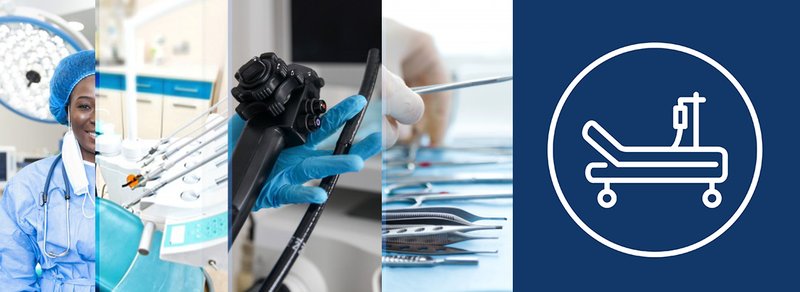Specialities
Urgent referrals
For advice, urgent referrals and out of hours support, call +223 20 22 11 11 , +223 20 22 99 99 , +223 91 22 11 11 or +223 82 22 99 99 to page this service’s registrar on call.

Gastroenterology service
We have endoscopy devices of the new technology and we make examination and give modern treatments for esophagus, stomach, and duodenum diseases. The diagnosis and treatment of patients are accompanied by sedative for their relief. Colonoscopy devices are available for the diagnosis and the treatment of the diseases of the big intestines, the sigmoid spine and the rectal.
Angiography service
Angiography studies blood vessels that are not visible on standard radiographs. We speak of arteriography for the exploration of the arteries and of phlebography for that of the veins.
This examination is very useful for the diagnosis of vascularization disorders or before surgery in order to pinpoint the path of the vessels.
At the arterial level, it looks for abnormalities such as narrowing (stenosis) or other obstacles to blood flow. We can explore the renal, pulmonary, cerebral arteries, the retina, limbs …
A dilatation of the vessel can be performed in the narrowed part: this is called angioplasty.
At the venous level, it is part of the phlebitis (clot in a vein) and determines its consequences.This examination uses X-rays and an iodine-based contrast agent.
Its principle consists in making visible (or opaque) the arterial or venous vessels. A catheter is introduced into the vessel to inject contrast product which mixes with the blood: the vascular system becomes visible on the radiological plates thanks to the radio-opaque properties of the iodine.
Delivery room
The delivery room is made in such a way that our patients can feel confident. Modern rooms are equipped with decent materials for prenatal examination and the supervision of the baby and the mother after delivery. We have two delivery rooms. Near the delivery room, there is an intensive care room for newborns to intervene quickly in case of complication with the baby during or after delivery.
Operating room, Intensive care Service and anesthesia
In the operating room, aeration, air conditioning, and all the hygienic conditions are respected. In addition, there is the laminar flow system in our operating rooms. There are four operation rooms. All the surgeries are done with modern medical equipments. The biomicroscope and the complete system will be used for brain surgery, ear-nose-throat diseases and eye operations. We have all the tools and equipments that will be used by the surgeon during the operation. A half-sterile room is available for the preparation of patients before the operation and their awakening after the operation.
A skillful team will be responsible for anesthesia 24 hours a day (general anesthesia, regional anesthesia, spinal anesthesia, epidural anesthesia, peripheral nerve (peripheral nerve block) matching and local anesthesia. The skillful anesthesia technicians constitute an important part of this team. They will be assisting specialist anesthesists. From newborns to the elderly persons, all surgical attempts of the surgical team on patients are possible in 24 hours a day and very quickly with the support of anesthetists.
Radiology
Medical radiology
Medical radiology refers to all diagnostic and therapeutic techniques, using X-rays and other radiation. It covers conventional radiology – or standard radiography -, by X-rays passing through the body to print a photosensitive film, medical imaging by ultrasound (ultrasound), by magnetic resonance (scanner and MRI) … and interventional radiology, all procedures invasive diagnostics and therapy performed by the radiologist.
Availables services in our hospital ;
Radiology techniques are used to detect, specify and sometimes treat a disease (fracture, malformation, foreign body, tumor, etc.). The main examinations are:
Standard radiography for the skeleton, joints and certain organs (lungs, abdomen, breasts, etc.)
Ultrasound (tissues, vessels, ligaments, etc.);
Doppler (blood flow);
The scanner which scans an area of the body and translates it into thin sections
